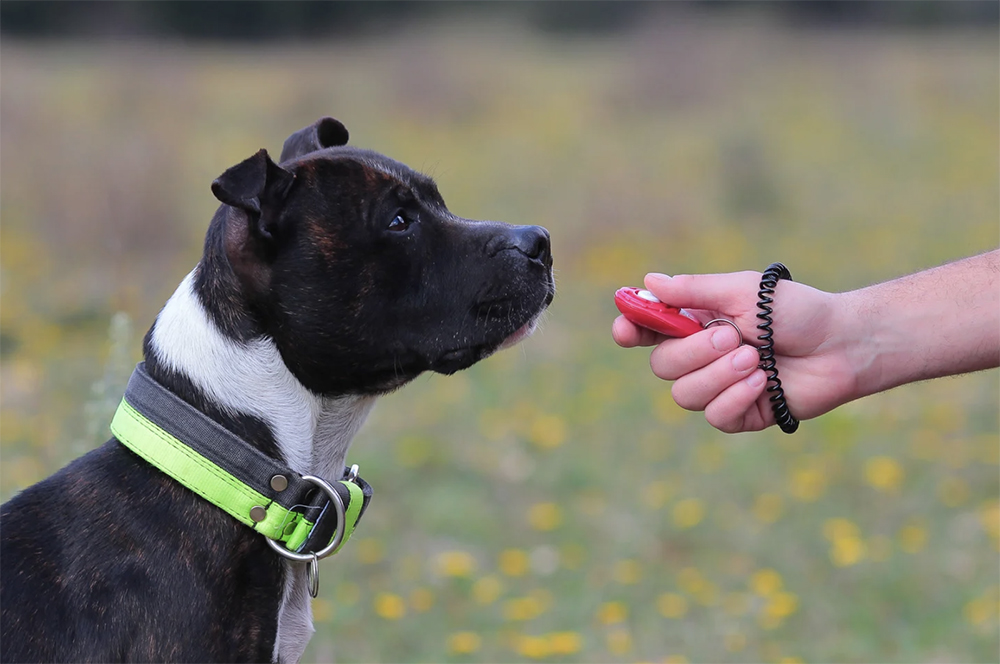By Heidi Clayton
When using positive reinforcement to train a dog, one of the most effective and popular training methods is clicker training. Clicker training is, in my opinion, the most efficient method you can use to make not only the most of your time but to deliver the clearest message to your dog that they did something correctly.
Clicker training involves using a small handheld box or device that normally has a button or a recessed metal tongue that, when pressed, makes a “click” sound. When dogs are consistently rewarded for good behavior, the likelihood of that good behavior being repeated increases. The difference when using a clicker as opposed to verbal praise is that the click sounds the same in everyone’s hands as opposed to verbal praise, which varies from person to person. Secondly, verbal praise is not always training-specific. Using a clicker during a training session will clearly deliver the message to your dog that they indeed did do it right.
A woman named Karen Pryor is credited for being at the forefront of clicker training from her work with many species of animals using a clicker and the subsequent development of a massive business called “Karen Pryor Clicker Training.” Pryor conducted a study and published an article called “The Neurophysiology of Clicker Training,” which found that the sound of the click is a conditioned response of joy and reaches the brain before verbal praise. So, basically, once a dog associates the sound of a click with receiving a reward and training, they will react reflexively and won’t be able to refrain from responding positively.
The sound of the click to an untrained dog might mean nothing at first. But once a dog is “powered up” on the use of the clicker, they may automatically react to it.
To start using a clicker in training, you will first need to “power up” the noise. I use meals as the ideal time to power up the clicker by simply just clicking and then immediately giving the dog a piece of food. I recommend that you do this for maybe three meals to really drive home that the sound of the click means a reward is coming. Every dog I work with who was not the most enthusiastic learner prior to the introduction of the clicker has an absolutely positive response to it. Their heads whip around to you when they hear the click.
After the power-up, you can then start to click and treat your dog when they offer the desired behavior. For example, when teaching a puppy to sit, you would lure their head up so their butt goes down onto the ground. When their butt hits the ground, click and treat them. Timing is important when using a clicker, so be sure to mark the “sit” when the butt is still on the floor, not if they are in the process of standing up. You can start to make the task harder by counting to maybe the first five seconds or ten seconds between the click and treat so your dog stops popping up after sitting for a split second.
I use clicker training all of the time, both with my clients’ dogs and my own. If you’re struggling to train your dog, try employing a clicker. There are endless resources available to show you how.
If you have any questions, please feel free to email me at heidi@fouronthefloordogtraining.net.
Heidi Clayton started Four On the Floor Dog Training to provide positive, reward-based dog training in South Jersey. She breeds, trains and shows bull terriers under the SoraBully’s Bull Terriers kennel name. Email questions to heidi@fouronthefloordogtraining.net or learn more at https://fouronthefloordogtraining.net
















